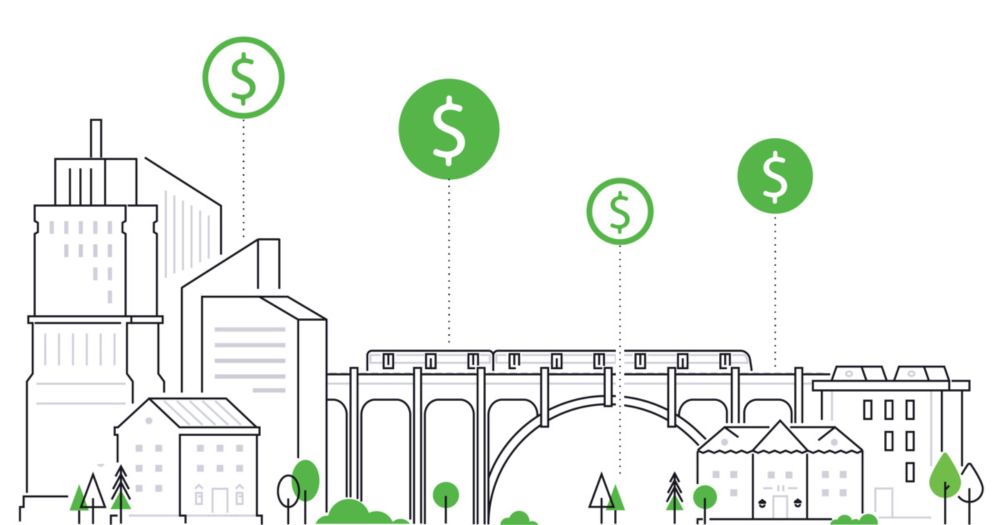U.S. Department of the Treasury Report: Homeowners Insurance Costs Rising, Availability Declining as Climate-Related Events Take Their Toll
As the latest climate-related crisis unfolds in Los Angeles, Treasury releases most comprehensive data on homeowners insurance in history, along with report detailing higher costs to homeowners and insurers of elevated climate perils. WASHINGTON – The U.S. Department of the Treasury’s Federal Insurance Office (FIO) today released the most comprehensive data on homeowners insurance in history, along with a major report showing that homeowners insurance is becoming more costly and harder to procure for millions of Americans as the costs of climate-related events pose growing challenges to insurers and their customers alike.The report is based on the most comprehensive and granular snapshot of the homeowners insurance market to date, covering over 330 insurers on more than 246 million homeowners insurance policies aggregated to the ZIP Code level from 2018 to 2022 (an annual average of 49.3 million policies). The data was collected through a first-of-its-kind effort by the National Association of Insurance Commissioners, state insurance regulators, and FIO.Among the report’s key findings:Homeowners insurance costs are rising fast across the nation, although with significant variation by region and ZIP Codes. Average homeowners insurance premiums per policy increased 8.7 percent faster than the rate of inflation in 2018-2022, according to the data analyzed. Some consumers faced substantially larger premium increases than the national average. Homeowners in communities affected by substantial weather events are paying far more than those elsewhere. From 2018 to 2022, consumers living in the 20 percent of ZIP Codes with the highest expected annual losses to buildings from climate-related perils paid $2,321 in premiums on average, 82 percent more than those in the 20 percent lowest climate-risk ZIP Codes. Policy nonrenewal rates also are higher in areas with the highest expected losses from climate-related perils. Consumers in the highest risk ZIP codes faced higher policy nonrenewal rates, with average nonrenewal rates about 80 percent higher than those in the lowest risk ZIP Codes. Moreover, average nonrenewal rates increased more in the highest risk areas than in the lowest risk areas over this period, which indicates that consumers faced decreasing availability. Climate change is making it more costly for insurers to operate. Insurers’ costs in 2018-2022 were higher in areas with the highest expected losses from climate-related perils. The paid loss ratio, which reflects how much insurers paid for claims relative to what they received in premiums, was highest in the highest risk ZIP Codes. These areas had a higher frequency of claims and severity of claims, about $24,000 on average compared to an average of about $19,000 for lowest risk areas. Homeowners insurance is important to U.S. consumers, the economy, and the financial system. For many Americans, their home is their largest financial asset and the cost and availability of adequate homeowners insurance has a direct impact on housing expenses and the value of homes. The cost and availability of insurance can also have significant consequences for local governments whose tax bases rely on property values. Moreover, homes are increasingly vulnerable to natural disasters. The National Oceanic and Atmospheric Administration reported that, from 2018-2022, 84 billion dollar disasters (excluding floods) cost over $609 billion and costs for such disasters have continued to rise since then. Today’s report considers homeowners insurance costs in the context of nine types of climate-related perils, explicitly excluding flooding (which is not typically covered by homeowners insurance policies) and non-climate-related disasters like earthquakes. “Treasury’s analysis comes at a time of devastating tragedy, loss of life, and destruction from the wildfires in the Los Angeles area,” said Secretary of the Treasury Janet L. Yellen. “While it’s far from clear what the exact financial costs of this disaster will be, it is a stark reminder of the impacts of the growing magnitude of natural disasters on the U.S. economy. Moreover, this disaster does not stand alone as evidence of this impact, with other climate-related events leading to challenges for Americans in finding affordable insurance coverage – from severe storms in the Great Plains to hurricanes in the Southeast. This report identifies alarming trends of rising costs of insurance – to consumers and insurers themselves – as well as lack of availability of insurance, all of which threaten the long-term prosperity of American families.”“Data and analysis, like those in this report, are critical for helping policymakers understand how substantial climate-related property losses are being spread across homeowners, insurers, and governments,” said Under Secretary for Domestic Finance Nellie Liang. “Our analysis is based on an important collaborative effort by the National Association of Insurance Commissioners, state insurance regulators, and FIO to collect nationwide, granular data to better understand and address current homeowners insurance challenges. Given the increasing frequency and severity of climate events, it is essential to build on and continue this effort.”In May 2021, President Biden issued Executive Order 14030 directing FIO to “assess, in consultation with States, the potential for major disruptions of private insurance coverage in regions of the country particularly vulnerable to climate change impacts.” Insurance in the United States is regulated at the state level. In March 2024, FIO announced it was engaging in a first-of-its-kind partnership with the NAIC, on the behalf of state insurance regulators, to collect data on the homeowners insurance market. The NAIC shared a subset of the collected data with FIO, with regular meetings between NAIC and FIO to collaborate, review and assess the data up to and beyond an agreed upon deadline of September 27, 2024. This report and the data collection effort complements the important efforts that states and local communities are undertaking to understand and address market challenges from the higher costs of climate-related disasters and other factors weighing on homeowners insurance markets.To promote greater public transparency, while protecting the privacy of insurers and consumers, Treasury is releasing a large subset of the aggregated ZIP Code level data underlying the analysis in this report. In particular, data presented in the report are being made available for ZIP Codes where there are at least ten insurers and at least 50 policies. These data can be downloaded here. More detail on the data collection and limitations for the data used in the report and the data being made available to the public are discussed in the report. ###


![Abstract: "Artificial intelligence chatbots driven by large language
models (LLMs) have the potential to increase public science
literacy and support scientific research, as they can quickly
summarize complex scientific information in accessible terms.
However, when summarizing scientific texts, LLMs may
omit details that limit the scope of research conclusions,
leading to generalizations of results broader than warranted
by the original study. We tested 10 prominent LLMs,
including ChatGPT-4o, ChatGPT-4.5, DeepSeek, LLaMA 3.3
70B, and Claude 3.7 Sonnet, comparing 4900 LLM-generated
summaries to their original scientific texts. Even when
explicitly prompted for accuracy, most LLMs produced
broader generalizations of scientific results than those in
the original texts, with DeepSeek, ChatGPT-4o, and LLaMA
3.3 70B overgeneralizing in 26–73% of cases. In a direct
comparison of LLM-generated and human-authored science
summaries, LLM summaries were nearly five times more
likely to contain broad generalizations (odds ratio = 4.85,
95% CI [3.06, 7.70], p < 0.001). Notably, newer models tended
to perform worse in generalization accuracy than earlier
ones. Our results indicate a strong bias in many widely
used LLMs towards overgeneralizing scientific conclusions,
posing a significant risk of large-scale misinterpretations
of research findings. We highlight potential mitigation
strategies, including lowering LLM temperature settings and
benchmarking LLMs for generalization accuracy."](https://cdn.bsky.app/img/feed_thumbnail/plain/did:plc:qiahueu7wxuzarfakwmp2cjz/bafkreihfxekxi2bwo6gq7hoqmv2isumlghcg2nnysb6ssmhvx75b2onhum@jpeg)













